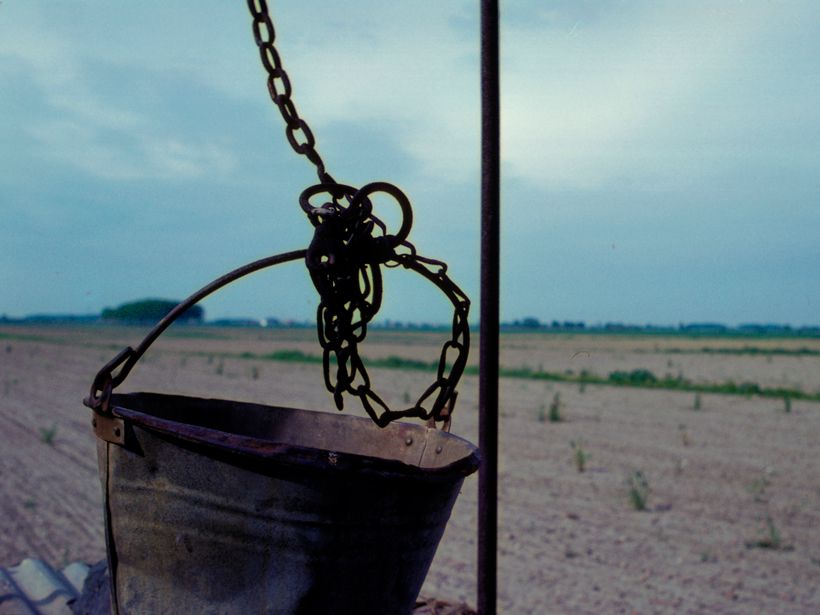Water-stressed areas, where it’s tougher and tougher to meet growing demands for both crops and everyday drinking water, have proliferated around the world. When you add climate change to the mix, even regions throughout Italy and Spain, which are currently sustainable, will face depleted water supplies by the 2040s.
Business-as-usual climate change combined with increasing water extraction means that it’s just a matter of decades until many areas worldwide will no longer have easily accessible water for human use or for ecosystems, according to Inge de Graaf, a hydrology researcher at the University of Freiburg, Germany. She presented her team’s models and findings during an invited talk on 11 December at the American Geophysical Union’s 2017 Fall Meeting in New Orleans, La.
“Freshwater resources are already under pressure due to population growth, expanded irrigated agriculture, economic development,” said de Graaf. For example, when people take water out of the ground faster than it can be recharged by rain, it creates groundwater depletion. Specific hot spots for depleting water include major irrigated regions in drier climates, especially California’s Central Valley and the upper Indus and Ganges river basins in South Asia.
But these well-known hot spots are just the first of many, de Graaf argued.
De Graaf and her team took currently available groundwater data across the world and added models of continued water demands and ongoing climate change if people don’t make major efforts to mitigate it. She found that it’s a matter of when, not if, different regions will run up against environmental limits within this century as water levels fall too low to keep rivers and streams flowing.
Breaching Limits
Is water a renewable resource? In many regions, the answer to that will be no.
“The question de Graaf is getting at is, is water a renewable resource?” said Michael Manga, an Earth scientist at the University of California, Berkeley, who was not involved with de Graaf’s study. In many regions, the answer to that will be no, he continued. “As groundwater levels drop, it will become difficult to sustain things that used to be there,” he said.
Hydrologists consider an area’s groundwater depleted when human influence drives down water flows 10% or more below their natural minimum, in the absence of precipitation. At these levels, humans as well as trees and plants can’t easily access the water anymore. De Graaf noted that parts of California and northern India have already reached these limits, as consumption has outpaced water replenishment from the Sierra Nevada and Himalayas, respectively.
De Graaf’s analysis shows that groundwater supplies on every continent except Antarctica will descend to depletion levels by the 2030s and 2040s. The exact time when that happens depends on how much water people use, especially through agriculture; how much is currently available; and how fast it gets replenished through aquifers.

Southern Europe, especially Italy and Spain, and parts of the Middle East and Africa have the disadvantage of becoming drier through climate change, de Graaf explained. So even current levels of water extraction will lead to water levels below critical thresholds in the future as precipitation becomes more and more scarce.
And the projections show that the change to depleted conditions in southern Europe will be rapid. “I was surprised that the environmental limits will be reached even with small [water level] declines,” de Graaf noted.
Depleted groundwater levels have an added consequence. As water levels fall and people need to dig deeper and deeper to get the water they want, irrigation costs more, and the price of water could rise rapidly. So even when there’s still some water left, for many it will become too expensive to buy, de Graaf noted.
—Ramin Skibba (email: [email protected]; @raminskibba), Freelance Science Journalist
Citation:
Skibba, R. (2017), Southern Europe’s groundwater use will become unsustainable, Eos, 98, https://doi.org/10.1029/2017EO088965. Published on 13 December 2017.
Text © 2017. The authors. CC BY-NC-ND 3.0
Except where otherwise noted, images are subject to copyright. Any reuse without express permission from the copyright owner is prohibited.

